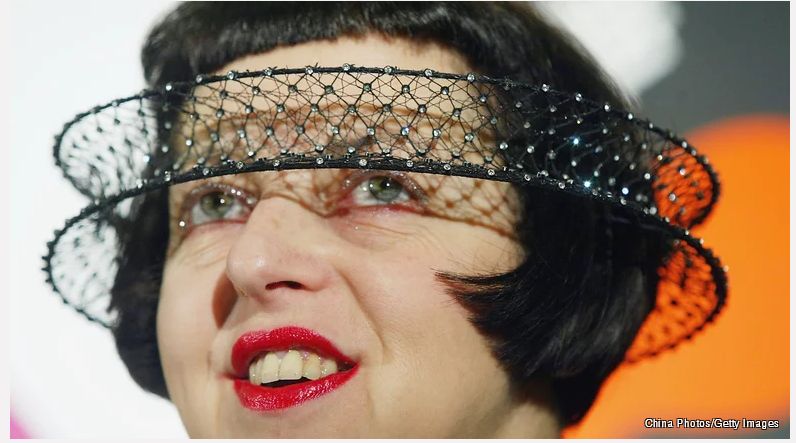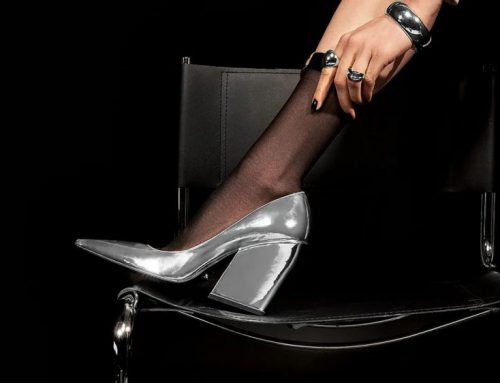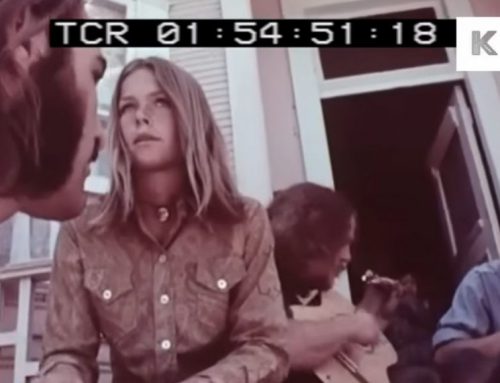I know this socialite was ill, but I also firmly believe that one of the reasons she killed herself is because she knew the secret that she and her friends were never allowed to reveal.
Then again, there was nothing stopping them from revealing it.
They just liked the money train they were on and the drugs and parties and fun and were willing to stay quiet about a murder.
You see, this A+ list designer liked to tell everyone how dark and depraved he was, but he really wasn’t. It was part of the aura surrounding him.
He thought he needed some street cred, and one day told two of his friends that he had killed a man he had s.e.x.. with in an alley the night before.
His friends didn’t believe him until our designer showed them the pictures of the body lying in the alley.
They still didn’t believe him until they saw the news reports later in the day about a homeless man found dead in an alley.
They still didn’t believe him until the police finally announced it was a homicide.
Until then, they thought the designer stumbled across the body in the alley and made up the tale.
The two friends became four which became about ten and none of them have uttered a peep.
The socialite wanted to but when she started making noise about it, the designer pushed her away to the point he wanted nothing to do with her.
Everyone else saw that and decided to keep their mouths shut.
Isabella Blow
She was an English magazine editor. As the muse of hat designer Philip Treacy, she is credited with discovering the models Stella Tennant and Sophie Dahl as well as propelling and continually advocating the career of fashion designer Alexander McQueen, beginning when she bought the entirety of his explosive premier show inspired by Jack the Ripper. She died by suicide in 2007.
A+ list designer: Alexander McQueen

The Tragic Real-Life Story Of Isabella Blow
The full extent of Isabella Blow’s tragic story came to light only after she died, with various people in the fashion industry celebrating her contribution and legacy. They’ve praised her for her exquisite taste, wild ideas, and her outfits, which became an artistic expression itself.
The fashion editorials she oversaw as a magazine editor and stylist became legendary, and she was often described as one of the most influential people in the fashion industry. Working for names as Tatler, Vogue, and The Sunday Times, she positioned herself as someone who had a unique eye, as per Vanity Fair. Discovering talents such as designer Alexander McQueen, hat designer Phillip Treacy, models Sophie Dahl and Stella Tennant, she worked as a godmother of the fashion world, paving the road to success for many people, but not herself.
Born into an aristocratic family line full of intrigues, overspending, and marital affairs, she experienced a traumatic, uprooted childhood from which she never properly healed. Struggling constantly with bipolar depression, her endeavors weren’t as fun as they looked from the outside. Her luxurious lifestyle was only a smoke screen for a life full of fear, longing, and self-loathing.
The day her brother drowned
According to journalist Edward Helmore for Vanity Fair, Isabella Blow experienced her first tragic event very early in life, growing up on her family’s estate in Staffordshire, England. On September 12, 1964, her 2-year old brother, Johnny, drowned in a half empty pool. Four-year old Isabella was supposed to look after him, while their nanny was on holiday.
As stated by Detmar Blow, Isabella’s husband, neither Isabella nor the rest of the family ever recovered from the accident (via Daily Mail). Detmar hinted that the real reason for Johnny’s death was a combination of chilly water and poor digestion, given the fact that the boy ate only baked beans in the absence of a nanny (via New York Magazine).
Isabella always wore lipstick later in her adult life, and as she recalled for Vanity Fair, this compulsion could stem from this tragedy: “I can remember everything about it. The smell of the honeysuckle, and him stretched out on the lawn. My mother went upstairs to put her lipstick on. That might have something to do with my obsession with lipstick.” As she confided to The Guardian journalist Emine Saner, after the tragedy, her parents lost all interest in the three girls who were still alive, Isabella and her sisters, Lavinia and Julia.
Her mother left when she was 14
As Detmar Blow recalls in his biography, “Blow by Blow,” Isabella Blow’s family started to fall apart quickly. Isabella’s parents, Lady Helen and Sir Evelyn soon grew apart. Helen stayed in London more and more, not being fully satisfied with a dull country life. When she couldn’t attend a planned travel journey due to a medical operation in 1973, Evelyn visited Asia alone. He met an exciting and young woman, Rona Crammond, and soon they became a couple.
Isabella and her sisters were safely stacked away at the Heathfield boarding school during that time. Isabella was 14 when she suddenly got the news of her parents divorcing. No one came to tell her about the announcement in person, she was informed by a letter, which she read during a lunch hour and left the dining room in tears.
But Isabella Blow’s own tragic family experience wasn’t the only thing that burdened her soul. She was the descendant of some intense individuals, whose legacy was felt strongly even after they died.
As reported by Vanity Fair, her grandfather, Sir Henry John Delves Broughton, also known as Jock, was a jolly man of very poor financial skills. He managed to bankrupt his family with bad investments and an excessive gambling habit, instilling the fear of poverty in his offspring for generations to come. But to make matters worse, he also loved beautiful women. He lost his temper in 1940 after his second wife, Diana Broughton, had a public affair on their trip to Happy Valley in Kenya. Her lover, Josslyn Hay, was soon found dead, and Henry was charged with murder. Despite being legally discharged, his reputation was ruined, and he died by suicide in 1942.
Thanks to her grandfather’s bankruptcy, Isabella Blow’s family had to adapt their living according to more modest means. According to “Blow by Blow,” by Detmar Blow, only 10% of the family estate wasn’t sold off yet, and Isabella’s father had to come up with innovative ways to make money if they wanted to stay in Staffordshire. He decided to turn the estate into a farm, which turned out to be a success. As a result, he family moved out of the palatial main house to a much smaller head gardener’s cottage, a move that Isabella “resent” all her life.
Isabella’s father managed to keep the family property from the auction block throughout his life but decided to sell half of it when he turned 65. When he died in 1994, he practically disinherited Isabella, leaving her only £5,000 as an inheritance — regardless of the fact that he was worth £6 million.
Financial struggles and insecurity plagued Isabella all her life. According to Detmar Blow (via The Guardian), she was severely incompetent when it came to dealing with money, spending everything on clothes and other luxury items. She often spent the whole budget she was given working as a fashion editor on random personal things, and Detmar was regularly her only rescue. At some point, working for Tatler magazine, she wanted to claim £50,000 in expenses for a purchase of “a very small ruin, which really was a must,” as per The Guardian.
Forever the ugly duckling
The frustration of being ugly started early in Isabella Blow’s childhood, and living with her beautiful stepsisters only made matters worse, as per “Blow by Blow.” She resented her parents for not fixing her noticeable teeth, and even though she was happy with her slim figure, she found her face very ugly.
According to Detmar Blow, the hatred of her features was something she carried inside all of her life. At one point she said, “It pains me to say so, but I’m ugly. I know that’s subjective, so perhaps I should say instead that I’m striking. My face is like a Plantagenet portrait” (via New York Magazine).
Being surrounded with models and other exceptionally beautiful humans, her confidence could hardly ever recover. But she did find a way of bypassing her deep discontent — she developed a fashion style out of covering her face, with hats, dresses, and other accessories. She was known and loved for her unique taste and impeccable eye for originality, but that could all be her hiding her self-doubt. As Anna Wintour told Vanity Fair, “One always wondered how she really felt about herself that she had to camouflage herself in these extraordinary outfits. That was there from the word go, but it got more extreme as she got older.”
Losing her home twice
Isabella Blow felt like she lost her home in teenage years, being evicted from her room in her family home. According to “Blow by Blow,” this led to some hectic years in London, where she earned money doing every possible odd job, even cleaning.
But the story would repeat itself when she was married to Detmar Blow. According to Vanity Fair, she put all her effort into decorating their home at Hilles, a big mansion in the countryside and the family home intended for the couple. She brought life to the old deteriorating house, believing it would someday be her legal home.
But things didn’t go as they planned. Detmar’s mother disapproved of their lifestyle full of lavish dinner parties and eccentric characters. But most of all, it was the Blow’s inability to earn money to sustain themselves and the estate.
Furthermore, since Isabella and Detmar couldn’t have children, Detmar’s mother decided that Hilles should go to Detmar’s sister and her family. After many fights and even legal battles, the Blow’s had to move out. And as Phillip Treacy noted, “that was the beginning of the end for Isabella.”
The battle with manic depression
According to “Blow by Blow,” Isabella Blow was convinced she inherited her depression from her suicidal grandfather. As designer Zac Posen told The New York Times, “thoughts of suicide were a big part of her existence and her persona.” She often struggled with ideas of dying, saying numerous times she wanted to die: “She wouldn’t shut up about it!” Vogue editor Hamish Bowles told New York Magazine.
People loved her for her high energy, and because she didn’t follow the rules. But this intensity was an act, hiding a much darker truth underneath — her manic episodes cost her jobs, relationships, and financial stability.
Her mania made her more and more demanding, and the periods of melancholia grew longer. She couldn’t handle her work or social obligations, which led her to try electric shock treatment, but neither that nor pills helped her to feel good again.
In 2007 Isabella Blow decided she had enough. On May 5, she ended up in a hospital after another suicide attempt. According to Vanity Fair, she recovered enough to greet her husband and some of her closest friends. As Philip Treacy remembers, she was in high spirits, “even as she was dying, she was making everyone laugh.” Two days later, she quietly died in her sleep.
It was hard for her inner circle to admit Isabella wanted to die. As Selina Blow, Isabella’s sister-in-law, told The Guardian, Isabella’s was in bad health due to a recent ovarian cancer operation. In fact, Detmar Blow’s official statement was that the cause of Isabella’s death was cancer, and he maintained this story in an interview with The Guardian: “I’ve steered people away from the prurience. She had cancer. That’s it. She’s dead now. We can’t change it. But we can celebrate her life, and our love for her.”
But even in her last hours, Isabella didn’t forget about fashion. Wearing a silver lamé blouse on her final hospital bed, she kept her sense of style. When Alexander McQueen allegedly visited a medium soon after Isabella’s death, the medium reported Isabella was with her grandmother, feeling well. A few days later she had another message from Issie: “And by the way, my mother is not to have any of my hats or shoes” (via Vanity Fair). – Source
Alexander McQueen and Isabella Blow’s Famous Friendship Is Getting the Movie Treatment
In the early 90s, Alexander McQueen and Isabella Blow were inseparable enfants terribles. It was Blow, the fashionable, hat-loving aristocrat, who discovered the young designer, suggesting he drop his first name, Lee, in favor of his “more regal” middle name, Alexander. The pair became close, with Blow serving as a sort of guide and muse for McQueen’s career. McQueen grew steadily more famous, eventually becoming the head designer of Givenchy. However, his relationship with Blow soured when he didn’t get her a salaried position at the fashion house.
When Blow committed suicide in 2007, McQueen dedicated his subsequent show to her. His solo work under his eponymous label had made him one of the biggest fashion stars in the world, praised for his avant-garde collections. However, three years after Blow, McQueen also committed suicide, hanging himself in his closet.
Now, the duo’s storied relationship is on its way to hitting the big screen. A film titled The Ripper is in the works at Maven Pictures, Variety reports, based on a script by Gesha-Marie Bland. Plot and cast details have not yet been announced.
The Ripper will also have a little friendly competition. It was announced earlier this year that Andrew Haigh (45 Years) is directing a different McQueen biopic for Pathe, with a script penned by English playwright Chris Urch. Haigh has not yet shared details about the biopic, but has promised he will deliver an “interesting take” on the endlessly interesting fashion figure. – Source
Read more on these Tags: Alexander McQueen, Isabella Blow









